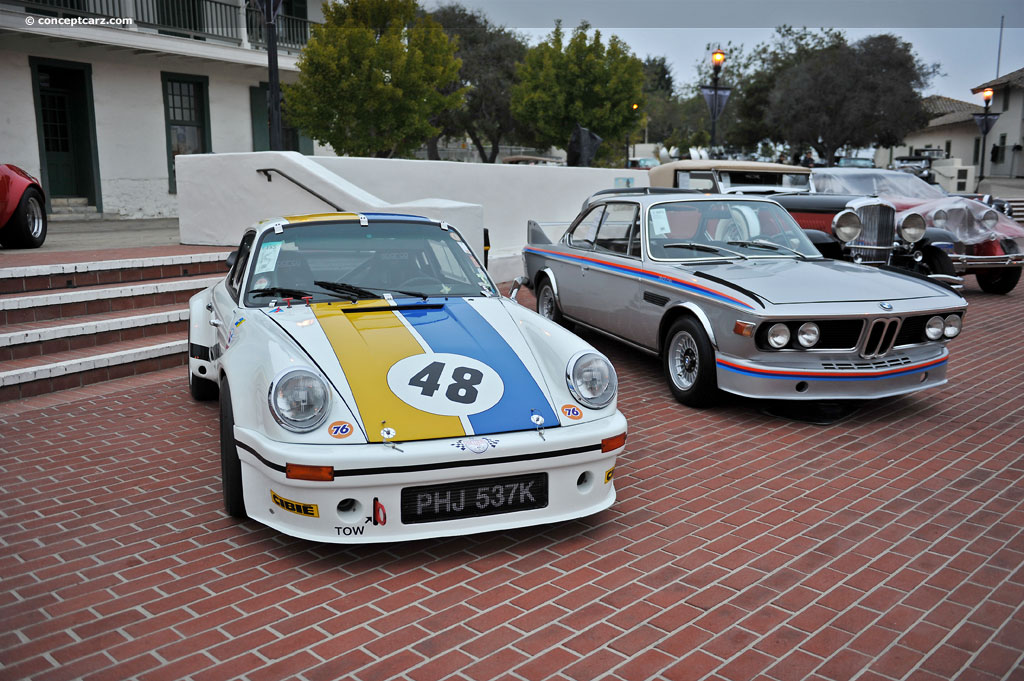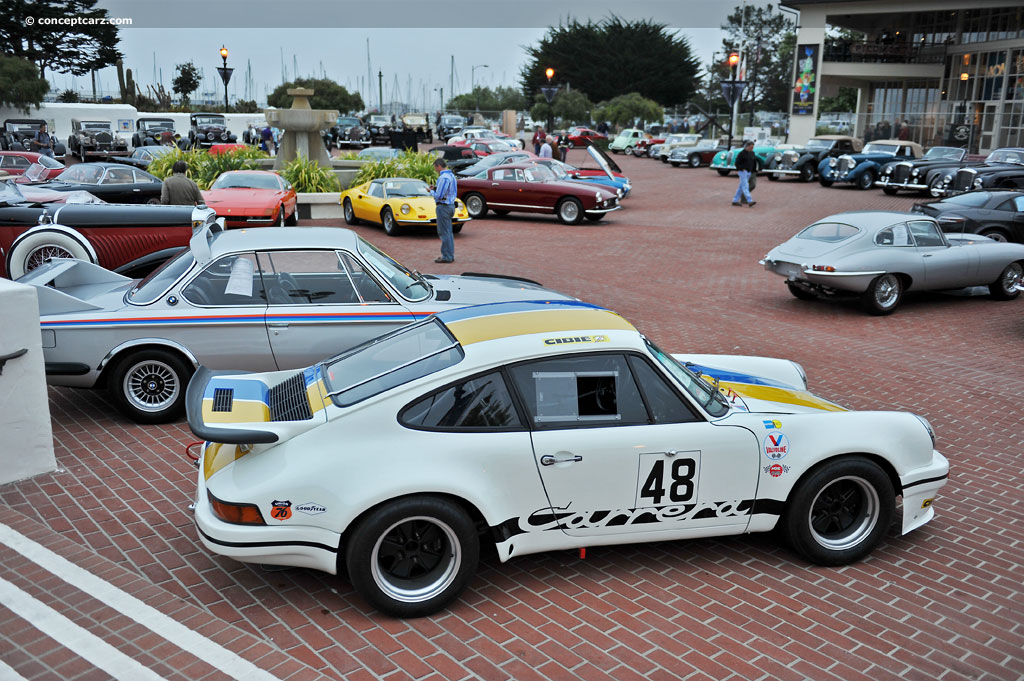Porsche's legacy is tied to both sports cars and motorsports. The racing department, since the mid-1960s, had created a new prototype racer nearly every year. It began with the 904 Sports GT model of 1964 and was followed by the 906, known as the Carrera 6, which would be the last street-legal race car from Porsche. The proceeding eight-cylinder 908 won the World Championship in 1969 followed by the legendary 917 the following season. With this new race car, Porsche became a contender for outright victory in every race it entered. Over a two-year period, the Porsche 917s won 15 of the 24 World Championship races they entered. Eventually, they would win more races in the Can-Am, Interserie, and Manufacturers World Championship than any other two-seater racecar ever produced. Victories were earned on the worlds greatest racing stages including Sebring, Daytona, Le Mans, Monza, Spa, and the Nürburgring
Coupe
Chassis #: 9112300030
View info and history
Auction entries : 1After the 1971 season, the 917 became ineligible to race in the world championship, so Porsche turned its attention to the nearly no-limit Group 7 class of the European Interserie and the North American SCCA Can-Am Challenge (Can-Am). The 917 (917/10 and 917/30) competed until the oil crisis era of 1973 brought its career to an end. (The Penske 917/30 raced in one race in 1974 and several customers continued to race with naturally aspirated engines in their 917/10K).Having proven they could dominate in international competition, Porsche re-focused its efforts from sports prototypes to production-based machinery. The German manufacturer began with its proven 911 and with further development transformed it into a racing car. The 2.4-liter 911 S received numerous improvements and with sufficient examples produced, was the RS (representing Rennsport in German, meaning race sport) 2.7 Carrera was homologated to race in 1972 for Group 4 competition. The formula was taken a step further, creating the even more radical and modified RSR Carrera to compete in the new Group 5 competition. The Carrera 2.7 RS was given a larger 2,687cc engine offering 210 horsepower with Bosch mechanical fuel injection, modified suspension, larger brakes, wider rear wheels, and a 'ducktail' rear spoiler. The RS Touring weighed about 2,370 lbs. while the Sport Lightweight was about 100 pounds lighter, achieved by using thinner gauge steel for its body shells and thinner glass. In total, 1,580 examples were made, with 49 Carrera RS built with the 2,808cc engines rated at 300 horsepower.
Coupe
Chassis #: 9112300030
View info and history
Auction entries : 1Further development followed for the 1973 season, with 55 examples of the RSR eventually built. Based on the Carrera RS 2.7, the RSR 2.8 (option M491) received a weight reduction of 80 kg, and the displacement increased by 119cc. The engine received twin-plug ignition, a higher compression ratio, larger valves, and extensive lightening of internal components resulting in an increase of horsepower to over 300 bhp. To help deliver the power to the ground, wider Fuchs wheels and wheel arches were installed as well as a low-level front air dam with an integral oil cooler. The 917-based braking installed providing exceptional stopping power and a refined suspension enhanced drivability and handling. The chassis was further strengthened to help code with the increase in power.
by Daniel Vaughan | Feb 2020

Coupe
Chassis #: 9112300030
View info and history
Auction entries : 1

Coupe
Chassis #: 9112300030
View info and history
Auction entries : 1
by Daniel Vaughan | Feb 2020
Related Reading : Porsche 911 History
The legendary Porsche 911 is the longest production run sports car of all time. It was conceived as a successor for the highly successful Porsche 356 and from the start had high aspirations for success. Ferry Porsches son, Ferdinand Alexander Porsche, designed the 911. When it went into production it was labeled the 901 but Peugeot had claims to the name, so to avoid infringing on their naming scheme,....
Continue Reading >>
Continue Reading >>
Related Reading : Porsche 911 History
Who could predict that the 911 would be Porsches saving grace and surpass the 356 in sales, longevity Quickly establishing itself as an icon of 60s cool, the iconic 911 only became more popular as the years went on. The flagship of the current lineup of Porsche, the 911 (pronounced Nine Eleven) or Neunelfer is a two-door grand tourer with a very distinctive design. The 911 is one of the oldest....
Continue Reading >>
Continue Reading >>
Similar Automakers
Similarly Sized Vehicles
from 1972
1972 Porsche 911 RSR Vehicle Profiles
Recent Vehicle Additions
Related Automotive News
Brumos Collection Unveils 'Brumos: An American Racing Icon'
Brumos An American Racing Icon
By Sean Cridland
A Look Inside The Three Volumes
Volume I The Brundage Era chronicles the historical events that led to the creation and development of one of the worlds most legendary teamsWith a foreword...

The Brumos Collection
The Brumos Collection, located at 5159 San Pablo Road South, recently opened its doors to the public, with viewings on Thursdays and Fridays from 10 a.m. to 3p.m (and one Saturday a month). Although they rarely use the word museum, the mission...

Competition at the Amelia Island Concours
Competition has always been a part of the Amelia Island Concours dElegance. The core group of classes includes four Race Car groups (Prewar, 1946-57, 1958-66, 1967-83). Additionally, there are four classes reserved for Sports Cars. For those seeking...

Porsche Honors Hurley Haywood On 70Th Birthday
Endurance racing legend born May 4, 1948
Atlanta, Georgia. Porsche congratulates one of its most decorated ambassadors, Hurley Haywood, on a shared anniversary The five-time Rolex 24 Hours of Daytona winner turns 70 today, just a month before...
All-Star Cast of Cars, Drivers at Porsche Rennsport Reunion V
The Porsche highlights for a weekend full of highlights
Atlanta, Georgia. For the Porsche Rennsport Reunion V taking place at Mazda Raceway Laguna Seca this weekend, both the men and the machines they drove are expected to outdraw one...
























